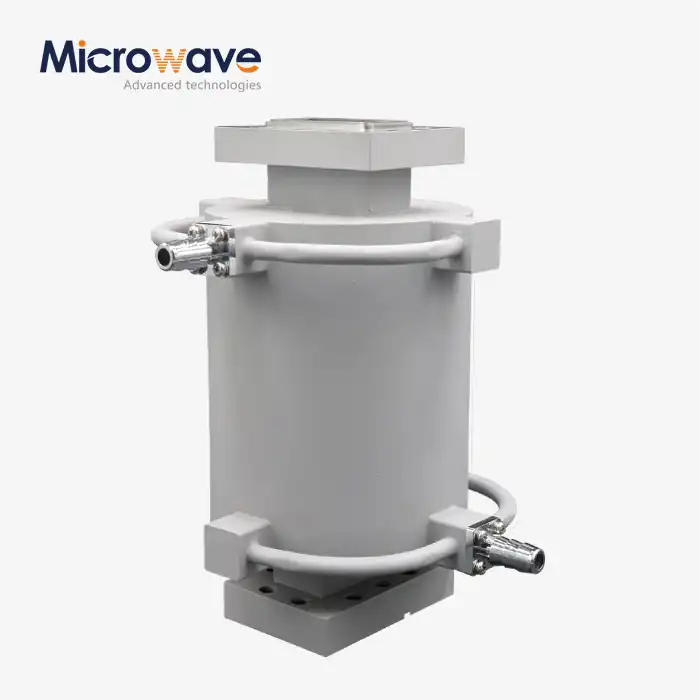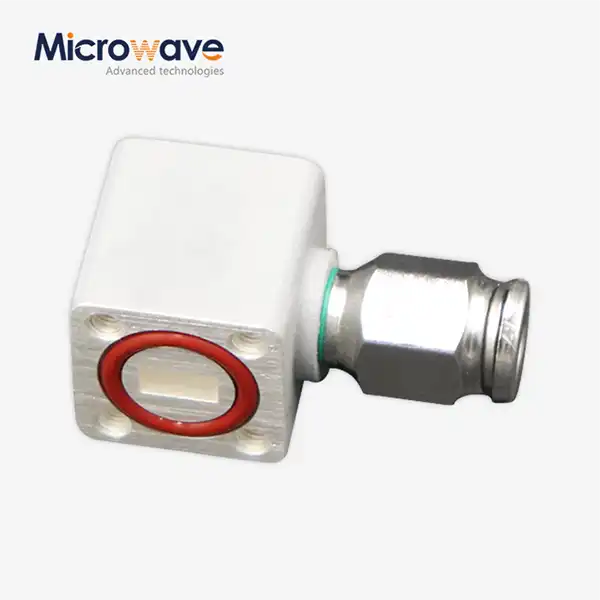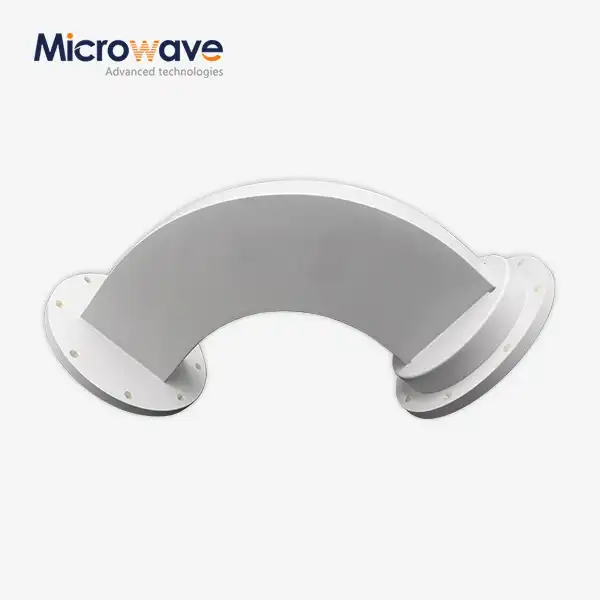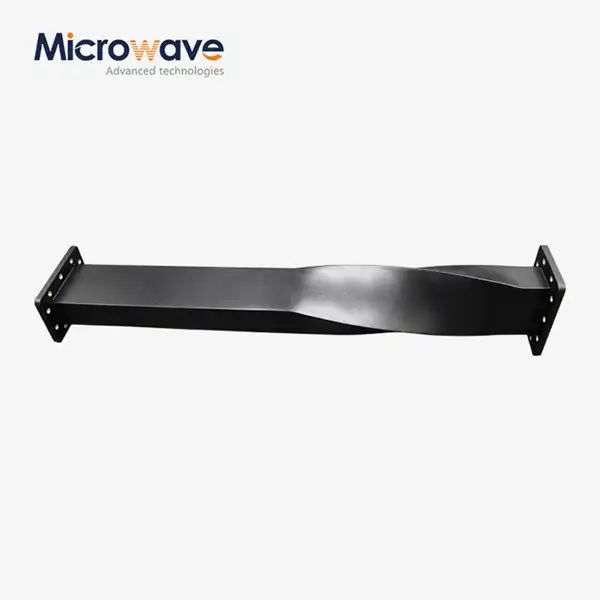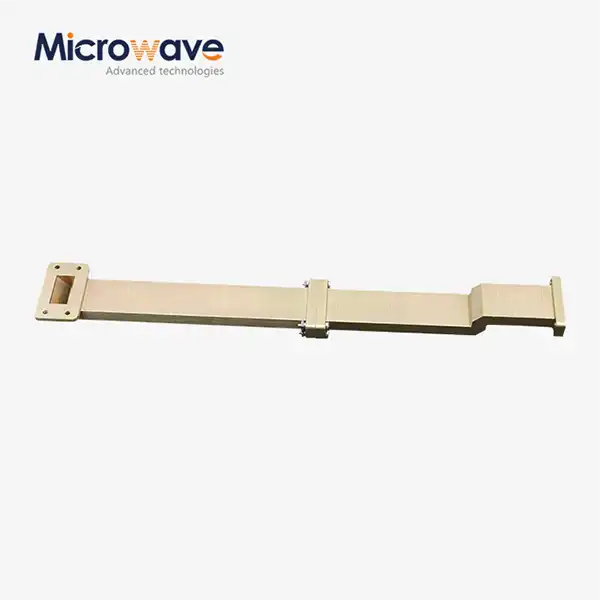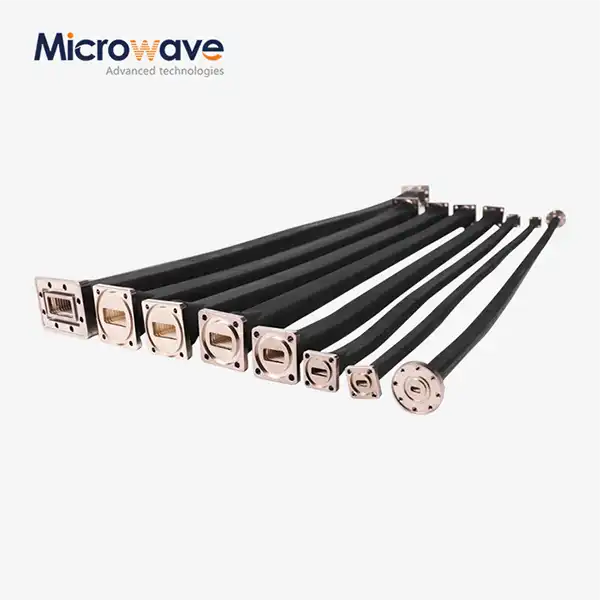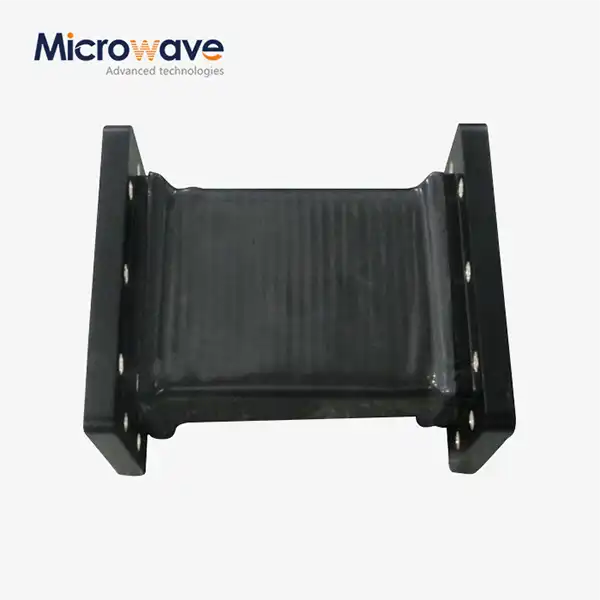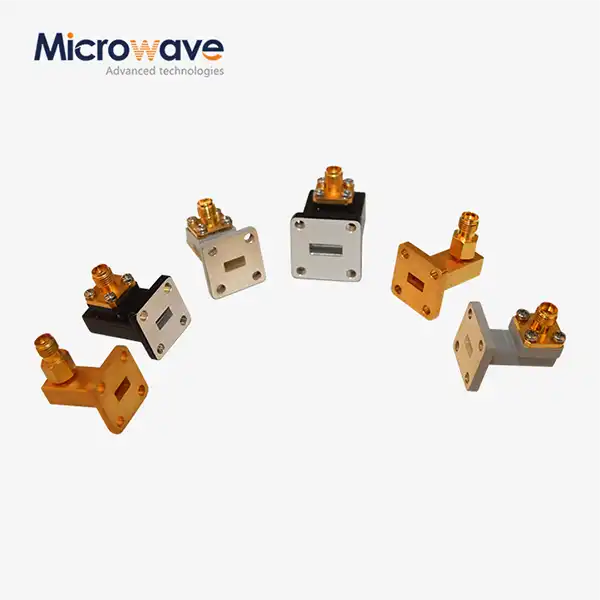5 Key Features to Evaluate in a Waveguide Coupling Fixed Attenuator
When system engineers encounter signal integrity issues in high-frequency applications, inadequate attenuator performance often emerges as the root cause. Whether you're designing satellite communication systems, radar installations, or precision test equipment, selecting the right Waveguide Coupling Fixed Attenuator becomes crucial for maintaining signal quality and achieving reliable performance. Understanding the five critical features that determine attenuator effectiveness can mean the difference between project success and costly system failures, making this evaluation process essential for engineers working across telecommunications, defense, and aerospace industries.
Precision and Accuracy: The Foundation of Reliable Waveguide Coupling Fixed Attenuator Performance
Manufacturing Tolerance Requirements
The precision of a Waveguide Coupling Fixed Attenuator directly impacts its ability to deliver consistent attenuation values across different operating conditions. Professional-grade attenuators maintain dimensional accuracies typically held to within ±0.0005 inches (±12.7 micrometers) for critical features, ensuring consistent electrical characteristics across production batches. This level of manufacturing precision becomes particularly critical when multiple attenuators must work together in complex systems, where even small variations can accumulate and degrade overall system performance. The attenuating elements within these devices are precisely positioned and secured within the waveguide structure using specialized fixturing and assembly techniques to maintain perfect alignment during the manufacturing process. This meticulous approach to construction ensures that the Waveguide Coupling Fixed Attenuator maintains specified attenuation accuracy, typically within ±0.5dB of the nominal value across the entire operating frequency range. Such precision becomes indispensable in applications like calibration standards for measurement equipment, where accuracy directly affects the reliability of subsequent measurements.

Temperature Stability and Environmental Resilience
Environmental factors significantly influence the performance stability of Waveguide Coupling Fixed Attenuator systems. High-quality units demonstrate exceptional temperature stability, maintaining their attenuation characteristics across wide temperature ranges typically encountered in aerospace and defense applications. The materials used in construction, such as precision-machined copper or aluminum alloy components, provide excellent thermal conductivity while maintaining dimensional stability under varying environmental conditions. Advanced designs incorporate compensation techniques that counteract temperature-induced changes in attenuation characteristics, ensuring that the Waveguide Coupling Fixed Attenuator delivers consistent performance whether operating in the controlled environment of a laboratory or the harsh conditions of outdoor installations. This environmental resilience proves particularly valuable in satellite ground stations and mobile radar systems where equipment must perform reliably across diverse operating conditions without recalibration.
Frequency Response and Bandwidth Characteristics
Broadband Performance Optimization
The frequency response characteristics of a Waveguide Coupling Fixed Attenuator determine its suitability for modern wideband applications. Superior attenuators demonstrate flat attenuation response across their specified frequency range, typically covering entire waveguide bands without significant variation. This broadband performance capability becomes essential when working with frequency-agile systems or applications requiring consistent attenuation across multiple frequency channels simultaneously. Modern Waveguide Coupling Fixed Attenuator designs leverage advanced coupling techniques to achieve exceptional bandwidth performance, often spanning frequency ranges from traditional microwave frequencies up to 110 GHz millimeter-wave applications. The coupling mechanism itself must maintain consistent directivity and low coupling variation across this broad frequency spectrum, requiring sophisticated engineering approaches that balance performance, cost, and manufacturing feasibility.
Harmonic Suppression and Spectral Purity
Signal purity becomes increasingly important in sensitive applications where spurious signals or harmonics can interfere with system operation. High-quality Waveguide Coupling Fixed Attenuator designs incorporate features that minimize harmonic generation while providing excellent suppression of unwanted frequency components. This spectral purity proves critical in applications such as precision measurement systems, where harmonic distortion could mask or interfere with the signals being measured. The coupling design within these attenuators plays a crucial role in maintaining signal integrity by providing high isolation between coupled and through ports while minimizing cross-coupling effects. Advanced designs achieve harmonic suppression levels exceeding 40 dB below the fundamental frequency, ensuring that the Waveguide Coupling Fixed Attenuator contributes minimal distortion to the overall system performance.
Power Handling and Thermal Management
Peak and Average Power Specifications
Power handling capability represents a fundamental specification that determines the operational limits of any Waveguide Coupling Fixed Attenuator. Professional-grade units specify both peak and average power ratings, acknowledging that different applications present varying power profile requirements. Pulse radar systems, for example, require attenuators capable of handling high peak power levels during transmission while managing relatively low average power levels. The power handling characteristics depend heavily on the attenuator's construction methodology and materials selection. High-power Waveguide Coupling Fixed Attenuator designs often incorporate specialized heat-dissipating elements and thermal management features that allow safe operation at elevated power levels without performance degradation. Understanding these power specifications becomes crucial when designing systems where power levels might vary significantly during operation or where safety margins must account for potential overload conditions.
Thermal Design Considerations
Effective thermal management within Waveguide Coupling Fixed Attenuator systems ensures reliable long-term operation under demanding conditions. Advanced designs incorporate thermal analysis during the development phase, optimizing heat dissipation paths and identifying potential thermal stress concentrations that might affect performance or reliability. The thermal design must account for both internal heat generation from signal attenuation and external environmental temperature variations. Modern manufacturing techniques allow for integrated thermal management solutions within the Waveguide Coupling Fixed Attenuator structure itself, eliminating the need for external heat sinking in many applications. These integrated approaches prove particularly valuable in space-constrained installations where traditional thermal management approaches might not be feasible while maintaining the compact form factors demanded by modern system designs.
VSWR and Impedance Matching Performance
Return Loss Optimization
Voltage Standing Wave Ratio (VSWR) performance directly affects the efficiency and stability of systems incorporating Waveguide Coupling Fixed Attenuator components. Excellent VSWR characteristics, typically better than 1.15:1 across the operating frequency range, minimize reflections that could degrade system performance or create instability in active components. This level of impedance matching becomes particularly critical in high-gain systems where even small reflections can accumulate and cause significant performance degradation. The impedance matching performance of a Waveguide Coupling Fixed Attenuator affects not only its own efficiency but also the performance of adjacent components in the signal chain. Poor impedance matching can create frequency-dependent variations in system response, potentially causing measurement errors or signal distortion that compromises overall system accuracy. Professional designs achieve excellent VSWR performance through careful optimization of transitions and coupling structures.
Impact on System Stability
Beyond simple performance metrics, the VSWR characteristics of Waveguide Coupling Fixed Attenuator components significantly influence overall system stability, particularly in applications involving high-gain amplifiers or oscillator circuits. Reflections from poorly matched attenuators can create feedback paths that lead to instability or undesired oscillations, potentially rendering entire systems inoperative. Advanced Waveguide Coupling Fixed Attenuator designs incorporate sophisticated impedance matching techniques that maintain excellent VSWR performance across temperature variations and aging effects. This stability proves essential in applications such as precision test systems or critical communication links where long-term reliability cannot be compromised by gradual performance degradation over time.

Mechanical Design and Integration Features
Flange Compatibility and Standards Compliance
The mechanical interface design of Waveguide Coupling Fixed Attenuator systems determines their compatibility with existing infrastructure and ease of integration into new designs. Standard flange configurations, ranging from WR10 to WR230 waveguide sizes, ensure compatibility with established system architectures while providing the mechanical stability necessary for reliable long-term operation. Adherence to industry standards such as EIA flanges guarantees interoperability with components from multiple suppliers. Professional-grade Waveguide Coupling Fixed Attenuator designs incorporate precision-machined flanges with carefully controlled surface finishes and dimensional tolerances that ensure reliable electrical contact and mechanical stability. The flange design must also account for potential misalignment during installation while maintaining electrical performance specifications across reasonable tolerance variations encountered in real-world installations.
Environmental Sealing and Durability
Environmental protection becomes increasingly important in applications where Waveguide Coupling Fixed Attenuator systems must operate in harsh conditions or outdoor installations. Advanced designs incorporate environmental sealing techniques that protect internal components from moisture, dust, and other environmental contaminants while maintaining excellent electrical performance. These sealing approaches must balance environmental protection with thermal management requirements. The mechanical construction of professional Waveguide Coupling Fixed Attenuator systems must also account for potential mechanical stress from vibration, shock, or thermal cycling encountered in mobile applications or harsh operating environments. Robust construction techniques and materials selection ensure that these components maintain their performance specifications throughout extended service life, even under demanding operational conditions.
Conclusion
Selecting the optimal Waveguide Coupling Fixed Attenuator requires careful evaluation of precision, frequency response, power handling, VSWR performance, and mechanical design features. These five critical aspects collectively determine system performance, reliability, and long-term operational success in demanding applications.
Cooperate with Advanced Microwave Technologies Co., Ltd.
Partner with Advanced Microwave Technologies Co., Ltd., your trusted China Waveguide Coupling Fixed Attenuator manufacturer and China Waveguide Coupling Fixed Attenuator supplier with over 20 years of experience. Our ISO-certified facilities produce High Quality Waveguide Coupling Fixed Attenuator solutions at competitive Waveguide Coupling Fixed Attenuator prices. As a leading China Waveguide Coupling Fixed Attenuator factory, we offer comprehensive OEM services, rapid prototyping, and expert technical support. Whether you need Waveguide Coupling Fixed Attenuator for sale or China Waveguide Coupling Fixed Attenuator wholesale solutions, contact craig@admicrowave.com for customized quotes and technical consultation.
FAQ
Q: What frequency range do waveguide coupling fixed attenuators typically cover?
A: Professional attenuators cover frequencies from 0.5 to 110 GHz, supporting applications from legacy systems to millimeter-wave technologies.
Q: How accurate are the attenuation values in these devices?
A: High-quality units maintain attenuation accuracy within ±0.5dB of nominal values across the entire operating frequency range.
Q: What power levels can waveguide coupling fixed attenuators handle?
A: Power handling varies by design, with specialized units supporting both high peak power for radar applications and continuous power for communication systems.
Q: Why is VSWR performance important in attenuator selection?
A: Excellent VSWR (typically better than 1.15:1) minimizes reflections that could degrade system performance and create instability in high-gain systems.
References
1. Wheeler, G.J. "Introduction to Microwaves" - IEEE Press Standards on Waveguide Components and Measurement Techniques
2. Montgomery, C.G., Dicke, R.H., Purcell, E.M. "Principles of Microwave Circuits" - Boston Technical Publishers Waveguide Theory and Applications
3. Ragan, G.L. "Microwave Transmission Circuits" - Dover Publications Advanced Attenuator Design Principles
4. Baden Fuller, A.J. "Microwaves: An Introduction to Microwave Theory and Techniques" - Pergamon Press Coupling Mechanisms in Waveguide Systems




